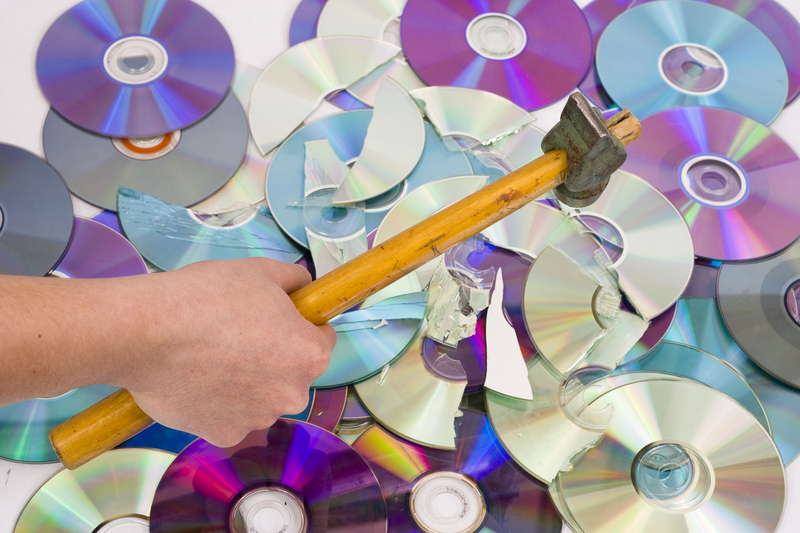How to Responsibly Recycle Pots and Pans
Recycling pots and pans is one of the most eco-friendly ways to reduce household waste and lower your environmental impact. However, it's not always clear how to responsibly dispose of used cookware. Nonstick coatings, mixed materials, and varying municipal guidelines further complicate the process. In this comprehensive guide, we'll explain how to recycle cookware properly, explore alternative reuse options, and provide actionable steps for everyone looking to give their pots and pans a second life.
Why Is Recycling Cookware Important?
Household pots and pans are primarily made from metals such as aluminum, stainless steel, and sometimes cast iron, with some containing plastic handles or nonstick coatings. If you toss them in the regular trash, not only do they take decades (or longer) to break down in a landfill, but valuable raw materials are also lost to the waste stream.
- Saves Natural Resources: Metals can be recycled nearly indefinitely, saving energy and reducing the need for new mining.
- Reduces Landfill Waste: Diverting cookware from landfills conserves valuable space and reduces methane emissions from decomposing trash.
- Protects the Environment: Responsible recycling keeps potentially harmful coatings and materials from leaching into the soil and water.

Understanding What Your Pots and Pans Are Made Of
Before you can recycle your old cookware, it's essential to understand what materials you're dealing with. This helps you determine the best recycling or disposal method.
- Stainless Steel: Resists rust, magnetic, highly durable. Examples: stock pots, some frying pans.
- Aluminum: Lightweight, may have dull surface, sometimes non-magnetic. Examples: saucepans, lightweight frying pans.
- Cast Iron: Extremely heavy, dark/black, often rusted if neglected. Example: skillets, Dutch ovens.
- Nonstick or Teflon-Coated: Can be aluminum or steel underneath; coated with PTFE or ceramic for easy cleaning.
- Copper: Sometimes a visible copper color on the outside, lined with tin or stainless steel.
Tip: Look for recycle codes, brand inscriptions, or searchable model numbers on the bottom of your cookware for material details.
Can All Pots and Pans Be Recycled?
In principle, all-metal cookware is recyclable. The challenge is sorting out mixed material pots and pans (e.g., nonstick, plastic, or wooden handles), which complicates the process.
Pure Metal Cookware
- Stainless steel, aluminum, and cast iron pans without nonstick coatings or attached plastic/wood can often be recycled as scrap metal at local recycling centers or scrap yards.
Nonstick and Coated Cookware
- Most curbside recycling programs do not accept nonstick-coated pots and pans due to contamination risks.
- Many scrap yards or specialized recycling centers may accept nonstick pans if you remove the handles, lids, and as much of the coating as you can.
Cookware with Plastic or Wooden Handles
- Handle removal is usually required, as mixed materials must be separated before recycling.
When in doubt, call your local recycling center and ask about their requirements for old cookware disposal.
How to Prepare Pots and Pans for Recycling
If you're ready to recycle unwanted pots and pans, here's what you should do to ensure they're accepted and processed correctly:
- Clean Thoroughly: Scrub to remove food debris and grease. For nonstick pans, try to remove as much coating as possible, if allowed.
- Remove Non-Metal Parts: Detach any plastic, silicone, or wooden handles. Many scrap yards require only metal parts.
- Separate by Material: If you're recycling different types of metal (e.g., aluminum vs. steel), keep them apart for easy sorting.
- Don't Bundle Items: Avoid taping or tying pots and pans together, which confuses sorting machinery.
Reminder: Always double check with the specific recycler about their exact preparation requirements, as practices vary!
Where to Recycle Old Pots and Pans
There are several ways to responsibly dispose of unwanted cookware:
1. Local Scrap Metal Yards
- Best for: All-metal pots and pans (aluminum, copper, steel, cast iron).
- Remove handles and non-metal parts first.
- You may even be able to earn a small payout for weightier items.
2. Municipal Recycling Centers
- Some centers have bulk or scrap metal collection points accepting cookware.
- Contact your city's public works or waste management department for guidelines.
- Nonstick-coated cookware often not accepted.
3. Curbside Collection (Check First!)
- Most curbside recycling bins will not accept cookware, especially if nonstick or containing non-metal parts.
- If your municipality does accept scrap metal, follow preparation requirements carefully.
4. Specialty Recycling Programs
- Some cookware brands (like Calphalon and TerraCycle) offer take-back programs for old pots and pans, including nonstick options.
- You may need to register or cover shipping costs.
5. Appliance and Metal Dropoff Events
- Cities occasionally host hazardous or large item collection events--check your city calendar.
- Some accept small metals, including outdated pots and pans.
6. Reuse and Repurpose First!
- If your cookware is still functional, donating it to charity shops or shelters keeps it out of the waste stream entirely.
- Creative upcycling ideas let you give new life to old cookware without recycling at all (see section below).
Creative Ways to Repurpose Old Cookware
Before recycling, consider if your worn-out pans could serve a new purpose around the house, in the garden, or as art. Repurposing pots and pans saves energy and resources by keeping items in use.
- Planters: Drill drainage holes and fill with soil for herbs or flowers.
- Storage Solutions: Use shallow pans as drawer organizers or catch-alls.
- Bird Baths or Feeders: Upend a big pot or hang a pan in your garden.
- Decorative Wall Art: Paint and mount as quirky home decor.
- Pet Food Bowls: Clean, shallow pans work perfectly for pets!
Use your imagination--many old pans have years of (non-cooking) life left!
Donation: The Greenest Option for Usable Cookware
You should donate pots and pans in good condition rather than recycling or trashing them. Many shelters, thrift stores, and charities accept gently used cookware. Some options include:
- Local shelters and soup kitchens
- Goodwill, Salvation Army, and other national chains
- Online 'Buy Nothing' or Freecycle groups
- Community centers or churches with kitchen programs
Quick tip: Wash thoroughly and avoid donating chipped, cracked, or heavily stained cookware, unless the institution confirms they can use or upcycle it.
Frequently Asked Questions about Cookware Recycling
Can nonstick pans be recycled?
Most regular city recycling will not accept nonstick cookware due to the Teflon or ceramic coatings, which are contamination risks. Some industrial scrap metal yards will take them after you remove the handles and as much of the coating as possible.
Do you have to remove handles before recycling?
Yes--removing plastic, wooden, or silicone handles (and knobs) is recommended. Mixed materials complicate recycling and might lead to the item being rejected.
Can I put pots and pans in my curbside recycling bin?
Generally, no. Most curbside programs do not accept cookware because of mixed materials and the risk of damaging sorting machinery. Always check with your local waste authority.
What about glass lids?
Glass lids are made of heat-resistant glass, unlike standard bottle or jar glass, and often need to be recycled at specialty centers. Do not put them in your regular recycling bin unless specifically allowed.
How do I recycle cast iron pans?
Cast iron is highly recyclable as scrap metal. Take the pan to a metal recycler or scrap yard--the iron can be melted down and reused indefinitely.
What Happens to Recycled Cookware?
When you recycle cookware responsibly, here's what typically happens:
- At a scrap yard or recycling center, pans are sorted by metal type, melted down, and refined for use in new products.
- Aluminum may return as beverage cans, window frames, or new pans.
- Steel and iron are used for construction materials, tools, or car parts.
- In specialty programs, coatings may be removed and disposed of safely before recycling the metal.
Tips for Eco-Friendly Cookware Choices
The journey to sustainable cookware disposal starts with smart purchasing. Here's how to buy with future recycling in mind:
- Choose pure metal cookware: Uncoated stainless steel, aluminum, or cast iron are easiest to recycle.
- Minimize or avoid nonstick coatings, which complicate recycling.
- Pick cookware with replaceable parts (e.g., removable handles) to facilitate easier recycling later.
- Invest in quality: Durable pans last much longer, reducing replacement waste.

Conclusion: Do Your Part, Recycle Responsibly!
Properly recycling pots and pans protects the environment, saves resources, and keeps valuable metals out of landfills. By understanding what your cookware is made of, where it's accepted, and the prep steps required, you can make a significant environmental impact. Always check with local recycling authorities or scrap metal facilities for the most accurate, up-to-date rules in your area, and consider donation or repurposing first. Together, we can build a more sustainable kitchen and cleaner planet!